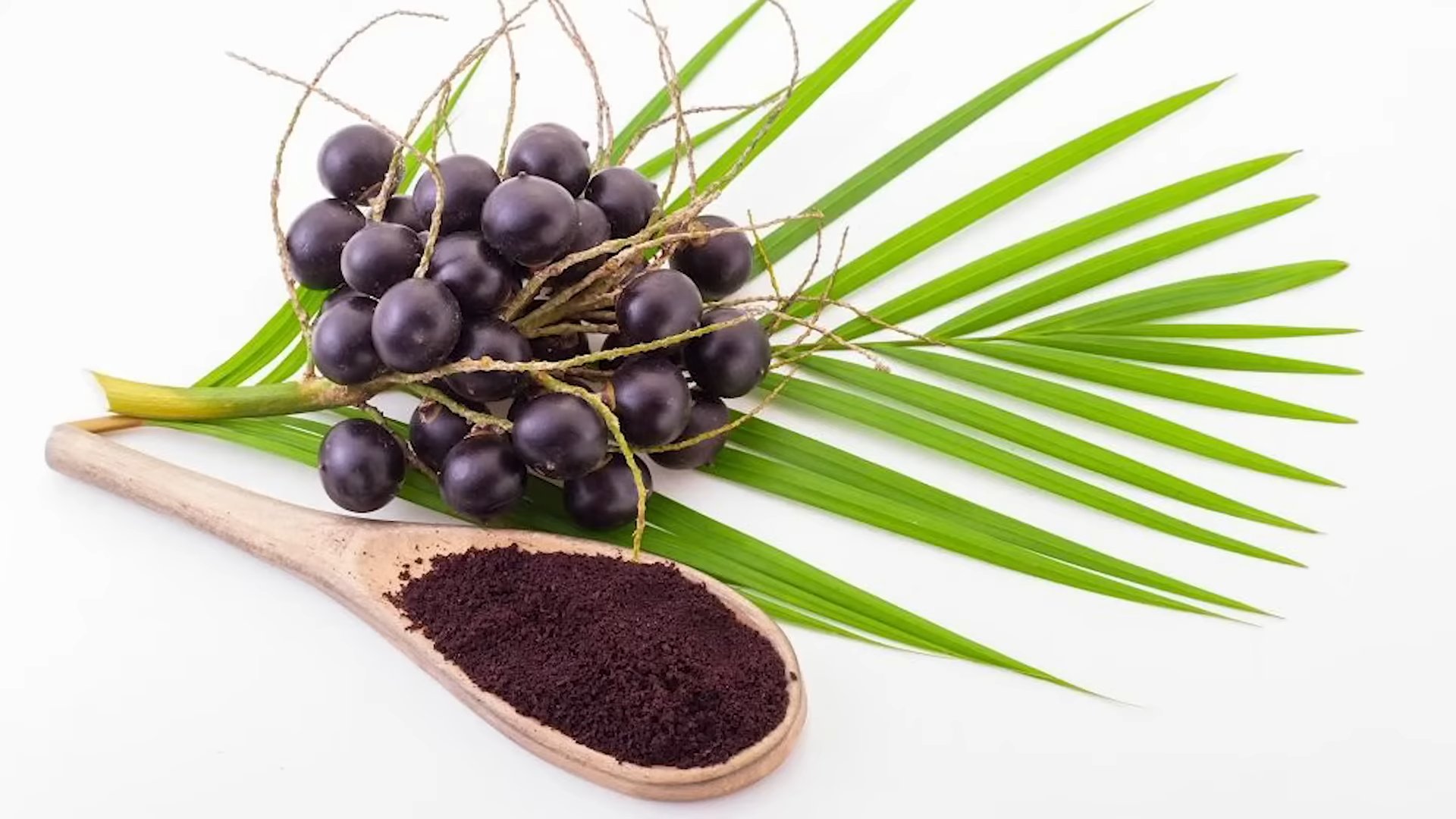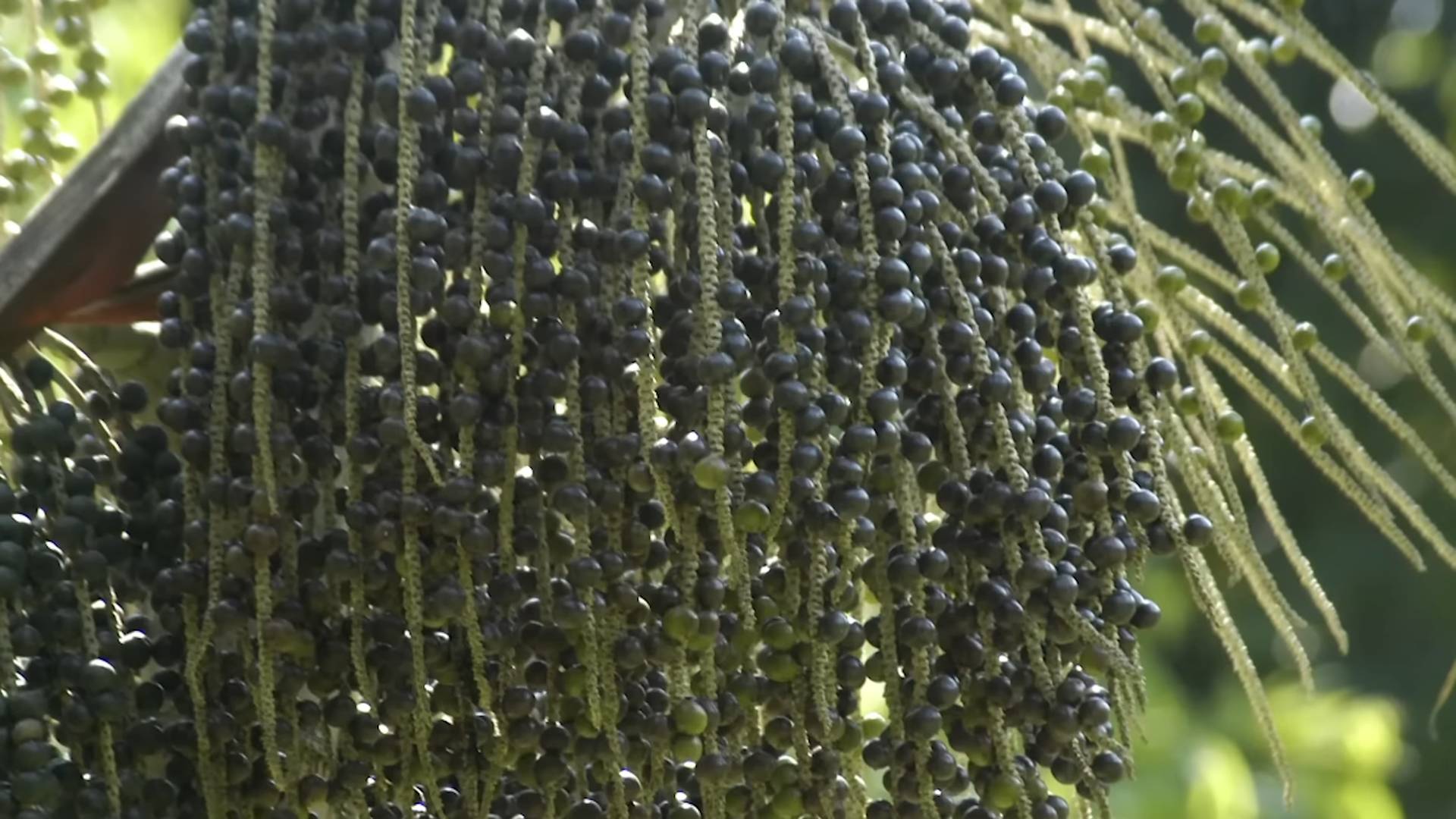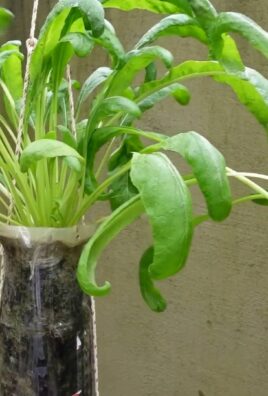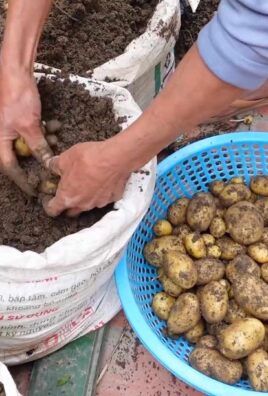Grow Acai Berries at Home? Absolutely! Imagine stepping into your backyard and harvesting your own antioxidant-rich superfood. It sounds like a tropical dream, right? Well, it’s more achievable than you might think! For centuries, the indigenous communities of the Amazon rainforest have revered the acai berry, not just for its nutritional power, but also for its vital role in their culture and sustenance. Now, you can bring a piece of that Amazonian magic to your own garden.
But why should you bother with the effort to grow acai berries at home? In today’s world, we’re all looking for ways to eat healthier, connect with nature, and maybe even save a few bucks. Store-bought acai berries can be expensive and sometimes lack the freshness we crave. By cultivating your own acai plants, you’re not only ensuring a supply of delicious, nutrient-packed berries, but you’re also embarking on a rewarding gardening journey. This DIY guide will provide you with the essential tricks and hacks to successfully cultivate these exotic berries, even if you don’t live in the tropics. Get ready to transform your garden into a personal superfood oasis!

Growing Acai Berries at Home: A DIY Guide
Okay, so you want to grow your own acai berries? Awesome! It’s a bit of a challenge, especially if you don’t live in a tropical climate, but totally doable with a little dedication and the right setup. I’m going to walk you through everything you need to know to get started.
Understanding Acai Berry Needs
Before we dive into the nitty-gritty, let’s talk about what acai palms (Euterpe oleracea) need to thrive. These guys are native to the Amazon rainforest, so they crave warmth, humidity, and plenty of water. Think steamy jungle vibes!
* Climate: Acai palms are happiest in USDA zones 10-11. If you live outside these zones, you’ll need to grow them in containers so you can bring them indoors during the colder months.
* Sunlight: They need bright, indirect sunlight. Direct, scorching sun can burn their leaves, especially when they’re young.
* Water: Consistent moisture is key. Acai palms don’t like to dry out.
* Humidity: High humidity is a must. Think 60% or higher.
* Soil: Well-draining, acidic soil is ideal.
* Space: Acai palms can grow quite tall (up to 50-100 feet in their natural habitat!), so consider this when choosing a location or container.
Sourcing Acai Seeds or Seedlings
The first step is getting your hands on acai seeds or seedlings. Seeds can be a bit trickier to germinate, so I personally recommend starting with a seedling if you can find one.
* Seeds: Look for reputable online seed suppliers specializing in tropical plants. Make sure the seeds are fresh for the best chance of germination.
* Seedlings: Local nurseries specializing in tropical plants might carry acai seedlings. You can also check online retailers that ship plants.
Germinating Acai Seeds (If You Choose Seeds)
If you’re feeling adventurous and want to start from seed, here’s how:
1. Scarification: Acai seeds have a hard outer shell, so you’ll need to scarify them to help water penetrate. Gently rub the seeds with sandpaper or nick them with a knife. Be careful not to damage the inner seed!
2. Soaking: Soak the scarified seeds in warm water for 24-48 hours. This will further soften the shell and encourage germination.
3. Planting: Fill a small pot with a well-draining seed-starting mix. Plant the seeds about an inch deep.
4. Humidity Dome: Cover the pot with a plastic bag or humidity dome to create a humid environment.
5. Warmth: Place the pot in a warm location (around 80-85°F). A heat mat can be helpful.
6. Patience: Germination can take several weeks or even months, so be patient! Keep the soil consistently moist but not waterlogged.
7. Transplanting: Once the seedlings have developed a few true leaves, you can transplant them into larger pots.
Planting Your Acai Seedling
Whether you started from seed or bought a seedling, the planting process is similar.
1. Choosing a Pot: Select a pot that’s at least 12 inches in diameter and depth. Make sure it has drainage holes. As the plant grows, you’ll need to repot it into larger containers.
2. Soil Mix: Use a well-draining, acidic potting mix. You can create your own by mixing equal parts peat moss, perlite, and composted pine bark.
3. Planting: Gently remove the seedling from its original container and loosen the roots. Place the seedling in the center of the pot and fill in around it with the soil mix. Make sure the top of the root ball is level with the soil surface.
4. Watering: Water thoroughly after planting.
5. Location: Place the pot in a location that receives bright, indirect sunlight.
Creating the Ideal Environment
This is where things get a little more involved, especially if you don’t live in a tropical climate.
Humidity
Acai palms need high humidity to thrive. Here are a few ways to increase humidity:
* Humidifier: The easiest way to increase humidity is to use a humidifier. Place it near your acai palm and aim for a humidity level of 60% or higher.
* Pebble Tray: Fill a tray with pebbles and water. Place the pot on top of the pebbles, making sure the bottom of the pot isn’t sitting directly in the water. As the water evaporates, it will increase the humidity around the plant.
* Grouping Plants: Grouping plants together can help create a more humid microclimate.
* Misting: Mist your acai palm regularly with water.
Temperature
Acai palms prefer temperatures between 70-85°F.
* Indoor Growing: If you’re growing your acai palm indoors, make sure it’s not exposed to drafts or extreme temperature fluctuations.
* Outdoor Growing: If you live in a warm climate, you can keep your acai palm outdoors during the summer months. However, be sure to bring it indoors when temperatures drop below 60°F.
Watering and Fertilizing
* Watering: Water your acai palm regularly, keeping the soil consistently moist but not waterlogged. Check the soil moisture by sticking your finger into the soil. If the top inch feels dry, it’s time to water.
* Fertilizing: Feed your acai palm with a balanced fertilizer (e.g., 20-20-20) every 2-3 months during the growing season (spring and summer). Follow the instructions on the fertilizer label. You can also use a fertilizer specifically formulated for palms.
Dealing with Pests and Diseases
Acai palms are generally resistant to pests and diseases, but they can occasionally be affected by:
* Spider Mites: These tiny pests can suck the sap from the leaves, causing them to turn yellow and stippled. Treat spider mites with insecticidal soap or neem oil.
* Scale: Scale insects are small, armored pests that attach themselves to the stems and leaves. Remove scale insects by hand or treat them with horticultural oil.
* Root Rot: Root rot is a fungal disease that can occur if the soil is too wet. Prevent root rot by using a well-draining potting mix and avoiding overwatering.
Pruning and Maintenance
* Pruning: Prune away any dead or damaged leaves.
* Repotting: As your acai palm grows, you’ll need to repot it into larger containers. Repot in the spring, using a well-draining potting mix.
* Cleaning: Wipe the leaves regularly with a damp cloth to remove dust and debris.
Harvesting Acai Berries (Eventually!)
Okay, this is the part we’re all waiting for! It can take several years (5-7 years or more) for an acai palm to mature and produce fruit, even under ideal conditions. So, patience is key!
* Flowering: Acai palms produce small, white flowers in clusters.
* Fruiting: After flowering, small, green berries will develop. These berries will eventually turn dark purple when they’re ripe.
* Harvesting: Harvest the berries when they’re fully ripe and dark purple. Use gloves when harvesting, as the berries can stain your hands.
* Processing: Acai berries are highly perishable and need to be processed quickly after harvesting. They’re typically soaked in water to soften the outer skin and then mashed into a pulp. The pulp can then be used to make smoothies, juices, and other products.
Troubleshooting
* Yellowing Leaves: Yellowing leaves can be caused by a variety of factors, including overwatering, underwatering, nutrient deficiencies, or pest infestations. Check the soil moisture, fertilize regularly, and inspect for pests.
* Brown Leaf Tips: Brown leaf tips are often caused by low humidity or dry air. Increase humidity by using a humidifier or pebble tray.
* Slow Growth: Slow growth can be caused by insufficient sunlight, poor soil, or lack of fertilizer. Make sure your acai palm is getting enough sunlight, use a well-draining potting mix, and fertilize regularly.
Important Considerations
* Space: Remember that acai palms can grow quite large, so make sure you have enough space for them.
* Climate: If you live in a cold climate, you’ll need to bring your acai palm indoors during the winter months.
* Patience: Growing acai berries takes time and patience. Don’t get discouraged if you don’

Conclusion
So, there you have it! Growing your own acai berries at home might seem like a tropical dream, but with the right approach and a little patience, it’s entirely achievable. We’ve walked through the essential steps, from understanding the climate requirements to nurturing your young acai palm. Why is this DIY project a must-try? Because it offers a unique opportunity to connect with your food source, enjoy the freshest possible acai, and potentially save money in the long run. Plus, there’s immense satisfaction in cultivating something so exotic and beneficial right in your own backyard (or even indoors!).
Think of the possibilities! Imagine adding freshly harvested acai berries to your morning smoothies, creating vibrant acai bowls, or even experimenting with homemade acai-infused desserts. The flavor will be unparalleled, and you’ll know exactly where your food comes from.
Variations and Suggestions:
Don’t be afraid to experiment! If you live in a cooler climate, consider growing your acai palm in a large container that can be moved indoors during the winter months. You can also explore different soil mixes to find what works best for your specific environment. Some gardeners have had success using a combination of peat moss, perlite, and compost.
Another variation involves the propagation method. While we focused on starting from seeds, you can also try propagating acai palms from suckers that grow at the base of mature plants. This method can be faster and more reliable than starting from seed.
Consider companion planting to enhance the health and productivity of your acai palm. Plants like bananas, coffee, and cacao can create a beneficial microclimate and provide shade.
Finally, remember that patience is key. Acai palms can take several years to mature and produce fruit. But the wait is well worth it when you can finally harvest your own delicious and nutritious acai berries.
We strongly encourage you to give this DIY trick a try. Growing acai berries at home is a rewarding experience that will connect you with nature and provide you with a sustainable source of this superfood. Don’t be intimidated by the challenges; with a little research and dedication, you can successfully cultivate your own acai palm.
We’d love to hear about your experiences! Share your tips, successes, and challenges in the comments below. Let’s create a community of acai enthusiasts and learn from each other. Your insights could help other readers successfully grow their own acai berries at home. Happy growing!
Frequently Asked Questions (FAQ)
1. Is it really possible to grow acai berries at home, especially if I don’t live in a tropical climate?
Yes, it is possible, but it requires careful planning and attention. While acai palms thrive in warm, humid environments, you can still cultivate them in cooler climates by using containers and providing supplemental heat and humidity. The key is to mimic the tropical conditions as closely as possible. Consider using a greenhouse or a sunroom to provide a controlled environment. You’ll also need to be diligent about watering and fertilizing your acai palm. Remember to bring the container indoors during the colder months to protect it from frost and freezing temperatures. With proper care, you can successfully grow acai berries at home, even if you don’t live in a tropical region.
2. How long does it take for an acai palm to produce fruit after planting?
Acai palms are known for their slow growth rate. It typically takes anywhere from 3 to 5 years for an acai palm to mature and begin producing fruit. This timeframe can vary depending on several factors, including the growing conditions, the variety of acai palm, and the overall health of the plant. Providing optimal conditions, such as consistent moisture, adequate sunlight, and regular fertilization, can help accelerate the fruiting process. Be patient and continue to provide the necessary care, and eventually, you’ll be rewarded with your own homegrown acai berries.
3. What are the specific soil requirements for growing acai palms?
Acai palms prefer well-draining, slightly acidic soil that is rich in organic matter. A good soil mix would consist of equal parts peat moss, perlite, and compost. The peat moss helps retain moisture, while the perlite improves drainage. The compost provides essential nutrients for the plant’s growth. It’s also important to ensure that the soil is well-aerated to prevent root rot. You can amend the soil with additional organic matter, such as leaf mold or well-rotted manure, to further improve its fertility. Regularly test the soil pH to ensure that it remains within the optimal range of 6.0 to 6.5.
4. How much sunlight do acai palms need?
Acai palms require plenty of sunlight to thrive. They prefer at least 6 to 8 hours of direct sunlight per day. However, young acai palms can be sensitive to intense sunlight, so it’s best to provide them with some shade during the hottest part of the day. As the plant matures, it can tolerate more direct sunlight. If you’re growing your acai palm indoors, place it near a sunny window or use grow lights to supplement the natural light. Ensure that the plant receives adequate sunlight to promote healthy growth and fruit production.
5. What are the common pests and diseases that affect acai palms, and how can I prevent them?
Acai palms are generally resistant to pests and diseases, but they can be susceptible to certain problems, especially if they are not grown in optimal conditions. Common pests that may affect acai palms include spider mites, aphids, and scale insects. These pests can be controlled by using insecticidal soap or neem oil. Diseases that can affect acai palms include root rot and fungal infections. Root rot is often caused by overwatering or poor drainage. To prevent root rot, ensure that the soil is well-draining and avoid overwatering. Fungal infections can be prevented by providing good air circulation and avoiding overhead watering. Regularly inspect your acai palm for any signs of pests or diseases and take prompt action to address any problems.
6. How often should I water my acai palm?
Acai palms require consistent moisture to thrive. Water your acai palm regularly, especially during the growing season. The frequency of watering will depend on the climate, the soil type, and the size of the plant. As a general rule, water your acai palm when the top inch of soil feels dry to the touch. Avoid overwatering, as this can lead to root rot. During the winter months, reduce the frequency of watering, as the plant will require less moisture. Ensure that the soil is well-draining to prevent waterlogging.
7. What kind of fertilizer should I use for my acai palm?
Acai palms benefit from regular fertilization. Use a balanced fertilizer that is specifically formulated for palms. A fertilizer with an NPK ratio of 8-2-12 is a good choice. Apply the fertilizer according to the manufacturer’s instructions. Fertilize your acai palm every 2 to 3 months during the growing season. Avoid fertilizing during the winter months, as the plant will be dormant. You can also supplement the fertilizer with organic amendments, such as compost or worm castings, to further improve the soil fertility.
8. Can I grow acai palms indoors permanently?
While it’s possible to start acai palms indoors, they eventually need a lot of space and light, making it challenging to grow them indoors permanently, especially to fruiting size. If you live in a climate where outdoor growing is impossible year-round, you can grow them in large containers and move them outdoors during the warmer months. Ensure the container is large enough to accommodate the root system and provide adequate drainage. Supplement with grow lights if natural light is insufficient. However, be aware that indoor-grown acai palms may not produce as much fruit as those grown outdoors.
9. Where can I purchase acai palm seeds or seedlings?
Acai palm seeds and seedlings can be purchased from reputable online nurseries or garden centers that specialize in tropical plants. Be sure to choose a reputable source to ensure that you are getting healthy and viable seeds or seedlings. Look for nurseries that offer a guarantee on their plants. You can also check with local botanical gardens or horticultural societies for recommendations. Before purchasing, research the specific variety of acai palm that you are interested in growing to ensure that it is suitable for your climate and growing conditions.
10. What do I do with the acai berries once I harvest them?
Once you harvest your acai berries, you’ll need to process them quickly, as they are highly perishable. The traditional method involves soaking the berries in water to soften the pulp, then mashing them to separate the pulp from the seed. The pulp can then be used to make smoothies, acai bowls, juices, and other delicious treats. You can also freeze the pulp for later use. Be sure to research proper processing techniques to ensure that you are extracting the pulp safely and efficiently. Enjoy the fruits of your labor!





Leave a Comment